What's New
Displaying results 1801 - 1810 of 4052

Resource | Publications,
This report presents the latest findings from collation and analysis of viral hepatitis data obtained from the disease notification system, service statistics, seroprevalence studies and other research findings. Much hopeful that the local viral hepatitis picture can be painted accurately and fully, this is certainly limited by the nature and availability of data. The presence of biases in data per se and their interpretation need to be acknowledged in reading this report.
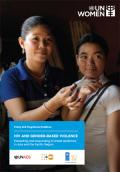
Resource | Publications,
This guidance provides a summary of the latest global targets and evidence on HIV and gender-based violence (GBV) in Asia and the Pacific Region. It presents case studies on emerging good practice, ideas for cross-collaboration and guidance for advocates, programmers and policy-makers working toward achieving gender equality, ending AIDS and eliminating GBV. The brief is intended to provide a resource for advocacy, policy and program development for use by civil society organizations, NGOs, UN Agencies and governments in the region.

Resource | Publications,
All forms of discrimination and violence in schools are an obstacle to the fundamental right to quality education of children and young people and no country can achieve inclusive and equitable quality education if students are discriminated against or experience violence because of their actual or perceived sexual orientation and gender identity.
This report presents the main findings of the global review. It aims to give an analysis of the most up-to-date data on the nature, scope and impact of violence based on sexual orientation and gender identity/expression and of current action. It also intends to provide education sector stakeholders with a framework for planning and implementing effective responses to violence based on sexual orientation and gender identity/expression as part of wider efforts to prevent and address violence in schools.
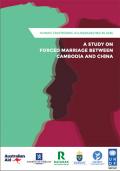
Resource | Publications,
This report examines patterns of forced marriage in the context of broader migratory flows between Cambodia and China. It primarily draws on the accounts of 42 Cambodian women who experienced conditions of forced marriage, with interviews having taken place in both countries. Key informants from government and non-government stakeholders in Cambodia and China were consulted as well.
The objective has been to analyze recruitment, brokering, transportation and exploitation patterns as well as the links between these; to determine service needs amongst Cambodians trafficked to China for forced marriage, in China, during the repatriation process and upon return to Cambodia; as well as to identify opportunities for interventions to prevent forced marriages from occurring and to extend protective services to those in need, at both policy and programming levels.
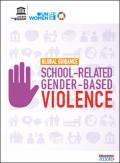
Resource | Publications,
The Global Guidance provides key information to governments, policy-makers, teachers, practitioners and civil society who wish to take concrete action against school-related gender-based violence. It introduces approaches, methodologies, tools and resources that have shown positive results in preventing and responding to school-related gender-based violence. With the Global Guidance in hand, this is a key moment for all of us to ensure that school-related gender-based violence does not remain a barrier to achieving the SDGs.
Promising practice case studies and recommended tools are embedded throughout the relevant sub-sections of the guidance. These provide readers with illustrative examples of implementation in real-life contexts and can serve as resources that have been successfully used – and can be adapted – for application in different contexts.
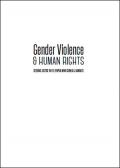
Resource | Publications,
Gender Violence and Human Rights enquires into gender violence and the efficacy of human rights advocacy and related reformist strategies in three western Pacific countries: Fiji, Papua New Guinea and Vanuatu.
Fiji, Papua New Guinea and Vanuatu are postcolonial nations operating in a global arena in which human rights doctrine is widely accepted and promoted. The three countries constitutionally guarantee gender equality and have ratified the key instrument for promoting women’s rights globally: the Convention for the Elimination of All Forms of Discrimination against Women (CEDAW). They have also ratified the Convention on the Rights of the Child (CRC), a convention or treaty that is crucial to combatting gender violence in the western Pacific, where rape victims are often underage.
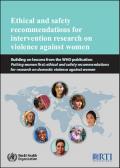
Resource | Publications,
These recommendations have been developed to help answer questions specific to conducting research on health-based interventions to prevent and respond to violence against women (VAW). Research on strategies that use health or health care as an entry point (regardless of the implementation setting, such as a clinic or community) is the focus. However, the discussion may be relevant to research on other kinds of VAW interventions.
The target audience for these guidelines includes stakeholders engaged in research on health-based interventions to address VAW. Such research may be conducted by multidisciplinary and cross-national or regional teams composed of researchers, programme implementers, evaluators, activists, advocates and care providers.
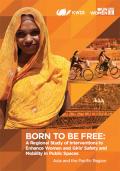
Resource | Publications,
The review included 55 evaluated interventions, a survey of over 118 stakeholders working on the issue globally, over 50 in-depth interviews and field visits to Jakarta, Indonesia; Hanoi and Ho Chi Minh City, Viet Nam; and Seoul, Republic of Korea.
The review found that there is an inconsistent understanding of the root causes of violence against women and girls (VAWG) in public spaces. There is often a failure to see violence against women in the urban public space as part of a larger continuum of violence against women and girls, which limits cross-cutting and holistic solutions in addressing the causes of sexual violence. Nevertheless, there are certain promising approaches. The highly participatory and explicitly feminist interventions from the global UN Women Safe Cities programme, among others, show great promise in their inclusion of women from the community to take up leadership roles in the safe cities movement.
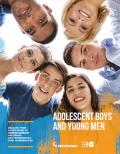
Resource | Publications,
Adolescence is a key period where individuals of all gender identities form attitudes, opinions and beliefs – about themselves, about their sexuality and about their place in the world. It is a period when ideas about equality can become ingrained. The study emphasizes that a holistic approach to advancing gender equality and sexual and reproductive health must include both adolescent girls and boys. It highlights the need to engage adolescent boys and young men as allies to achieve gender equality and as supporters of women’s empowerment, as well as the importance of addressing the specific health and social development needs of boys themselves.
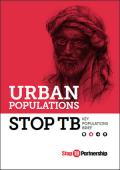
Resource | Publications,
Globally, the prevalence of TB is much higher in urban areas than in rural areas. Around 54% of the world’s population now lives in cities, with the most rapid rates of urbanization being witnessed in developing countries. In the developed world, urbanization has led to overall improvements in health, but this trend has not been mirrored in less-developed regions of the world. In these settings, the key social and economic determinants of TB converge on the poorest populations.
The inability of public health care services to keep up with the massive population growth in urban centres has led to an expansion of the informal private, for-profit health care sector. These private providers are able to meet their customers’ demands by offering services that have been overlooked by the formal health sector, such as longer opening hours, more flexible payment options and more convenient locations.





